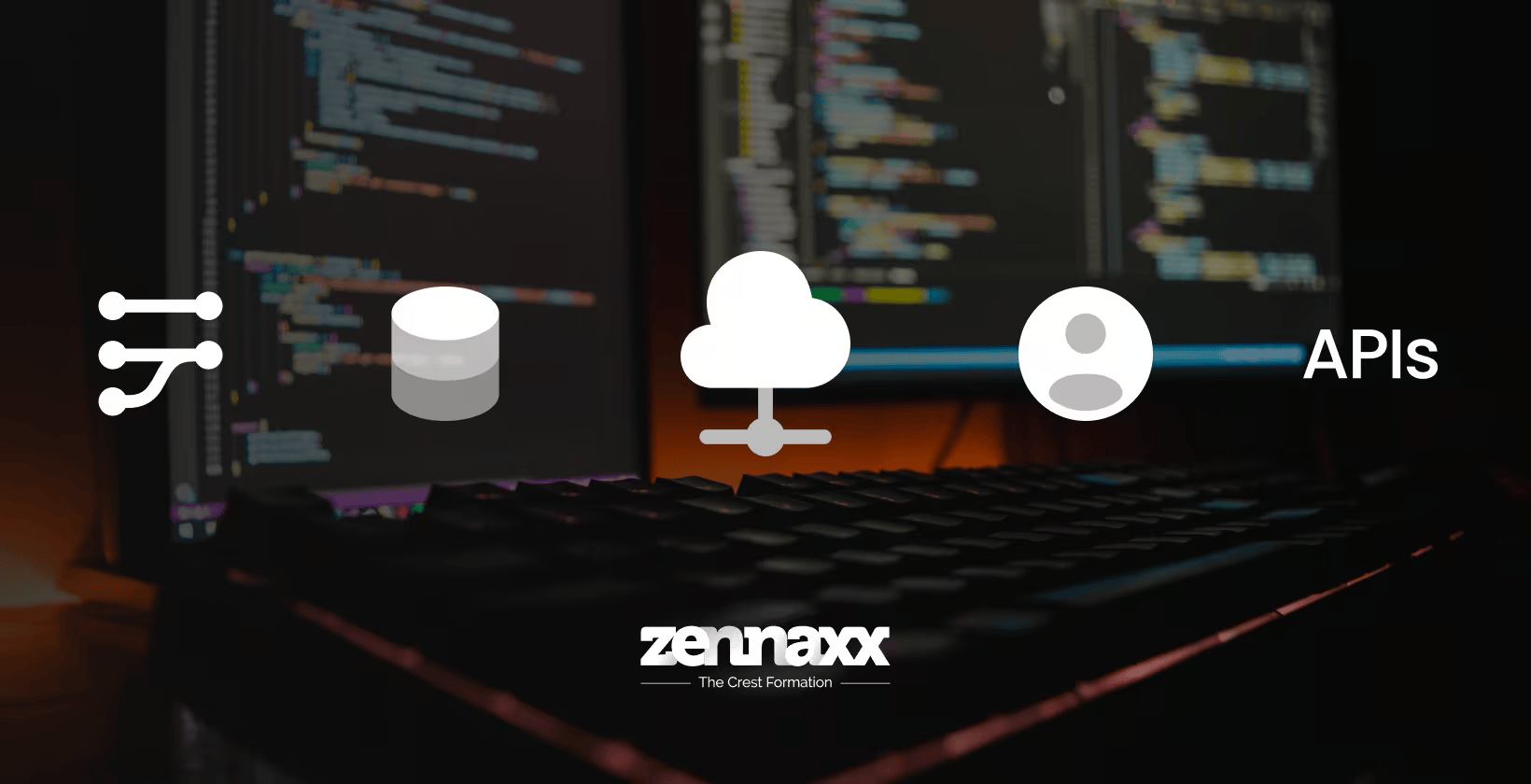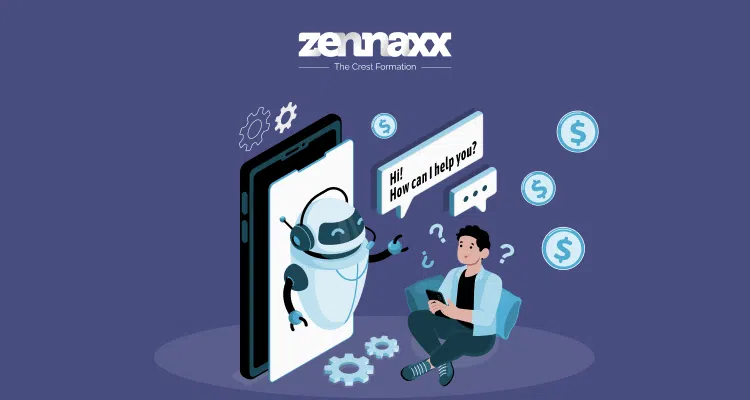The UX design process is crucial for crafting digital products that are not only functional but also enjoyable to use.
For business owners and those seeking to hire a UX design company, understanding this process is vital to achieving success.
A well-executed UX design can significantly enhance user satisfaction, loyalty, and business growth.
In this post, we will explore the detailed 8-step UX design process, key differences between UX design and design thinking, and UX design best practices.
By the end, you’ll have a comprehensive understanding of how to implement a successful UX design process, whether you’re enhancing an existing product or developing something new.
Ready to dive in and discover how great UX design can transform your business? Let’s get started.
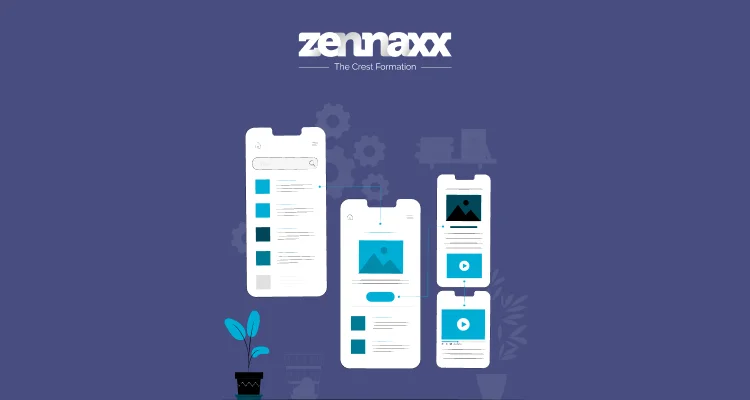
Why Is UX Design Important?
Good UX design can be the difference between a product that people love and one that they abandon.
Think about it – if an app is frustrating to use, you’re probably going to delete it, right? On the flip side, a well-designed product can increase user engagement, retention, and even sales.
So, user experience (UX) design is important because it ensures that the user’s needs are at the forefront of the design process, leading to higher satisfaction, better usability, and increased engagement.
In today’s competitive market, a strong UX can differentiate your product from your competitors, making it essential for success.
What is a UX Design Process?
The UX design process is a series of steps that designers follow to create products that offer great user experiences.
It involves understanding the user’s needs, defining the problem, researching, ideating, prototyping, testing, and iterating.
This process helps in systematically solving design challenges and ensuring that the final product meets the user’s expectations and requirements.
UX Design Process vs. Design Thinking Process
The UX design process and the design thinking process are both user-centered approaches that designers use for solving problems creatively and iteratively, though they differ in scope and application.
Designers use the design thinking process for understanding problems and generating creative solutions, while the UX design process is used to create user-friendly products and services that enhance usability and user satisfaction.
The 8 Step UX Design Process
The UX design process is a structured approach to creating products that offer seamless experiences to users.
By following a systematic path from project definition to quality assurance, businesses can ensure that their digital products meet user needs and deliver exceptional value.
Stage 1 – Project Definition and Scope
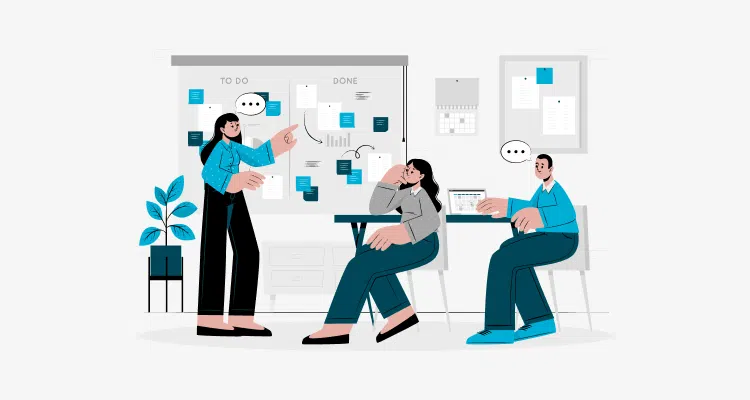
The first step in the UX design process involves defining the project’s objectives, goals, and scope.
This includes understanding the business goals, identifying the target audience, and setting clear project milestones and deliverables.
This process ensures that everyone involved has a clear understanding of what the project aims to achieve and the constraints within which it will operate.
For example, a company wants to redesign its e-commerce website to increase conversion rates.
The project definition would include identifying the target audience (e.g., tech-savvy millennials), setting goals (e.g., 20% increase in sales), and defining constraints such as budget and timeline.
Stage 2 – Understanding the Problem
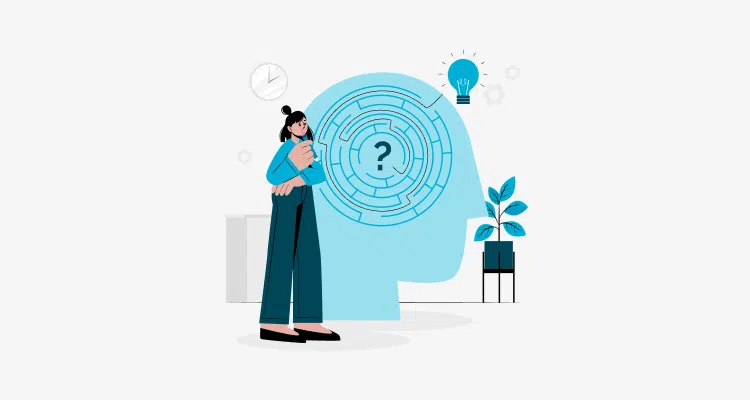
In this stage, designers dive deeper into understanding the problem they need to solve.
This involves gathering information about the users, their pain points, and their needs through various research methods.
Designers use techniques like user interviews, surveys, and market analysis to gain insights into the user’s challenges and expectations.
Let’s continue with the e-commerce website redesign example. Designers will conduct user interviews and surveys to understand why users are abandoning the site’s shopping carts.
Common issues might include a complicated checkout process or a lack of multiple payment options.
Stage 3 – UX Research
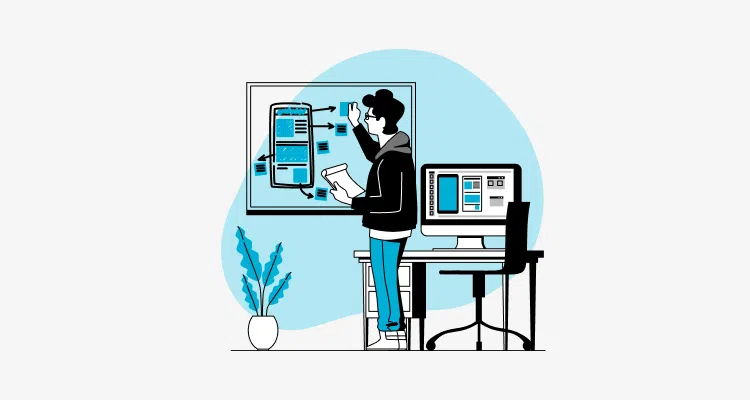
UX research involves collecting data about users and their interactions with the product.
During this stage, designers use both qualitative and quantitative methods, such as usability testing, user surveys, and competitive analysis, to gather data.
This research helps designers understand your end-user’s behavior, preferences, and needs in order to make informed design decisions.
It provides a foundation for the UX design process by highlighting key areas of focus.
For our e-commerce website redesign example, the design team might use heatmaps to see where users click most often on the current website, combined with survey feedback to identify specific frustrations with the shopping experience.
Stage 4 – Ideation (Sketching and Low-Fidelity Prototyping)
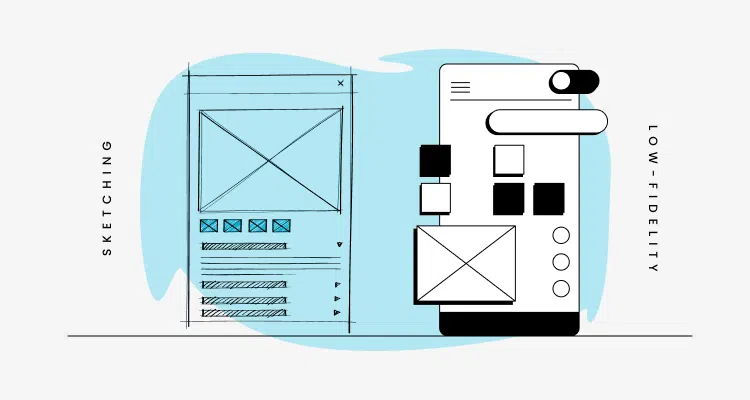
In the ideation stage, designers brainstorm ideas and create sketches and low-fidelity prototypes.
These rough representations of the product allow designers to explore different concepts and iterate quickly.
This stage is all about generating a wide range of ideas and narrowing them down to the most viable solutions.
Back to our e-commerce website redesign example. The design team sketches multiple versions of the checkout process, each with different layouts and features.
They then create low-fidelity wireframes to visualize these ideas and gather initial feedback.
Ready to design your next app?
Contact us today and let our team of experienced professionals transform your vision into an innovative and user-friendly app that stands out in the market!
Stage 5 – High-Fidelity Mockups and Prototypes
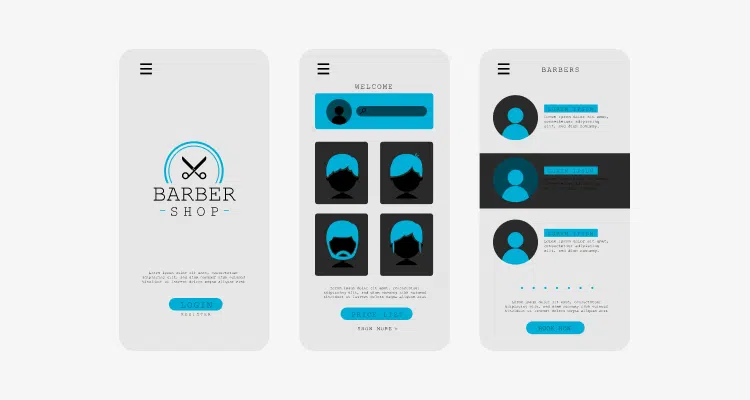
Once a promising direction is identified, designers create high-fidelity mockups and interactive prototypes.
High-fidelity prototypes are detailed and interactive representations of the product. They are used to visualize the final design and test its functionality.
Basically, the designers will create realistic mockups that closely resemble the finished product, allowing stakeholders to see and interact with the design before development begins.
For our e-commerce website redesign example, the designers will use tools like Sketch or Figma to create a high-fidelity prototype of the new checkout process, complete with branding, detailed visuals, and interactivity.
Stage 6 – Usability Testing
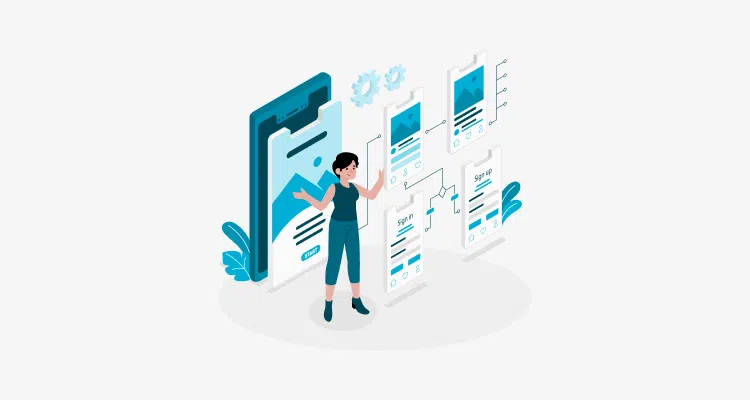
Usability testing involves observing real users as they interact with the prototypes to identify any usability issues or areas for improvement.
This stage is critical for ensuring that the design is user-friendly and meets the user’s needs. The feedback from usability testing is then used to refine and improve the design.
Continuing with the e-commerce website redesign example, the design team conducts usability tests where users perform tasks like adding items to the cart and checking out.
Observations and feedback from the test reveal that users appreciate the new, streamlined layout but struggle with the payment options.
Now the team can use this feedback to further improve the design.
Stage 7 – Design Handoff
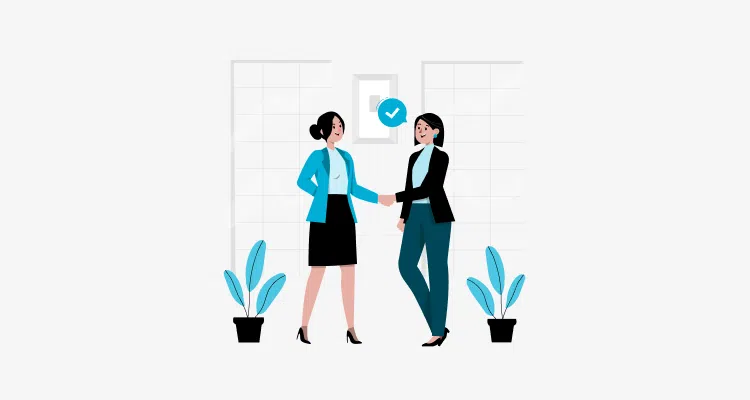
The design handoff is the process of transferring the final design to the development team.
This step of the UX design process involves providing detailed design specifications, assets, and guidelines to ensure that the developers can accurately implement the design.
Clear communication and collaboration between designers and developers are essential for a smooth handoff.
Stage 8 – Quality Assurance or UX Audit
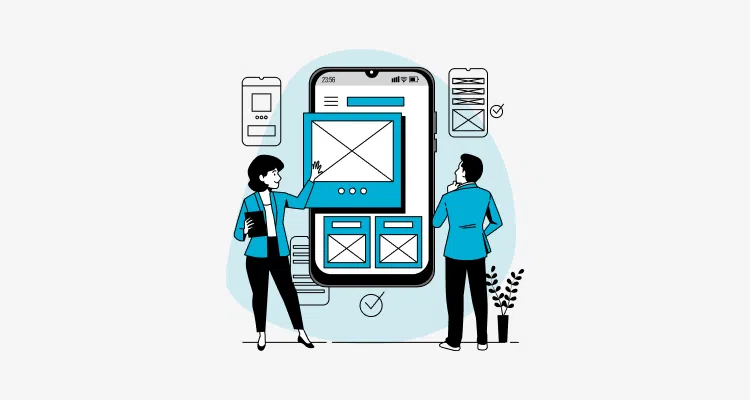
This final stage of the design process helps identify any last-minute issues and ensure that your product is ready for launch.
Quality assurance involves reviewing the final product to ensure that it meets the design specifications and provides a great user experience.
While UX audit is a comprehensive review of your product’s usability, accessibility, and overall user experience.
Want to Automate Your Business Process With a Software Solution?
Zennaxx, a leading software development firm in Canada, has delivered 700+ bespoke solutions spanning various industries.
How the UX Design Process Has Evolved
The UX design process has evolved over the years, adapting to new technologies and changing user expectations. Initially, UX design was more about aesthetics and functionality.
Today, it combines a deeper understanding of user psychology, behavior, and needs with a strong emphasis on continuous improvement and feedback.
The rise of agile methodologies and tools has also influenced the UX design process, making it more collaborative and flexible.
Lean UX: An Iterative Approach to the Design Process
Lean UX is an approach that emphasizes rapid experimentation and iteration. It focuses on getting user feedback early and often, allowing designers to make informed decisions quickly.
This approach involves creating minimum viable products (MVPs) and quickly testing and refining them based on user feedback.
Lean UX is particularly effective in fast-paced environments where speed and agility are crucial.
For instance, a startup might use Lean UX principles to quickly develop and test a new feature for their app by releasing a basic version to gather user feedback and iterating rapidly based on the responses.
Best Practices for a Great UX Design Process
To ensure a successful UX design process, here are some best practices to keep in mind:
1. Research
Conduct thorough user research using both qualitative and quantitative methods to gather comprehensive insights into users’ needs, behaviors, and pain points.
This ensures that the UX design process is based on real user data and actionable findings.
2. Prototyping
Prototyping is a critical step in the UX design process, where ideas and concepts come to life in tangible forms.
It involves creating preliminary versions of a product, which can range from simple sketches to high-fidelity interactive models.
By creating tangible representations of ideas early in the design process, designers can explore different design solutions and refine and validate concepts efficiently, leading to better final designs.
Designers create low-fidelity prototypes for early-stage ideation and high-fidelity prototypes for detailed testing.
3. User Testing
Regularly test designs with real users through usability testing, A/B testing, and other methods.
User testing generates feedback that helps designers identify and address usability issues early, and validate design choices, ensuring that the final product effectively meets user needs and expectations.
4. User-Centric Thinking
Maintain a user-centered approach throughout the design process by making decisions based on user needs, preferences, and feedback.
Avoid relying on assumptions or personal preferences to ensure that the final product truly resonates with the target audience.
5. Practicing Empathy
Empathy is essential in UX design; strive to understand users’ emotions, motivations, and frustrations.
This deep understanding helps create designs that address real user problems and provide meaningful and satisfying experiences.
6. Communicate and Collaborate
Effective communication and collaboration between designers, developers, and stakeholders are essential for a successful design process.
Use tools and techniques that facilitate clear communication and foster teamwork to ensure that everyone involved is aligned and working towards common design goals.
Summary
There you have it – the ultimate 8-step guide to a successful UX design process. By following these steps, you can create products that not only meet user needs but also delight them.
Remember, the key to great UX is understanding your users and being willing to iterate and improve continuously.
Are you looking to hire seasoned designers to create visually-captivating products that deliver a seamless user experience? Consider partnering with Zennaxx for your UI/UX needs.
Our expert design team specializes in creating intuitive, user-friendly designs that meet your business goals and delight your users.
Transform your vision into reality with our comprehensive UX design services.

